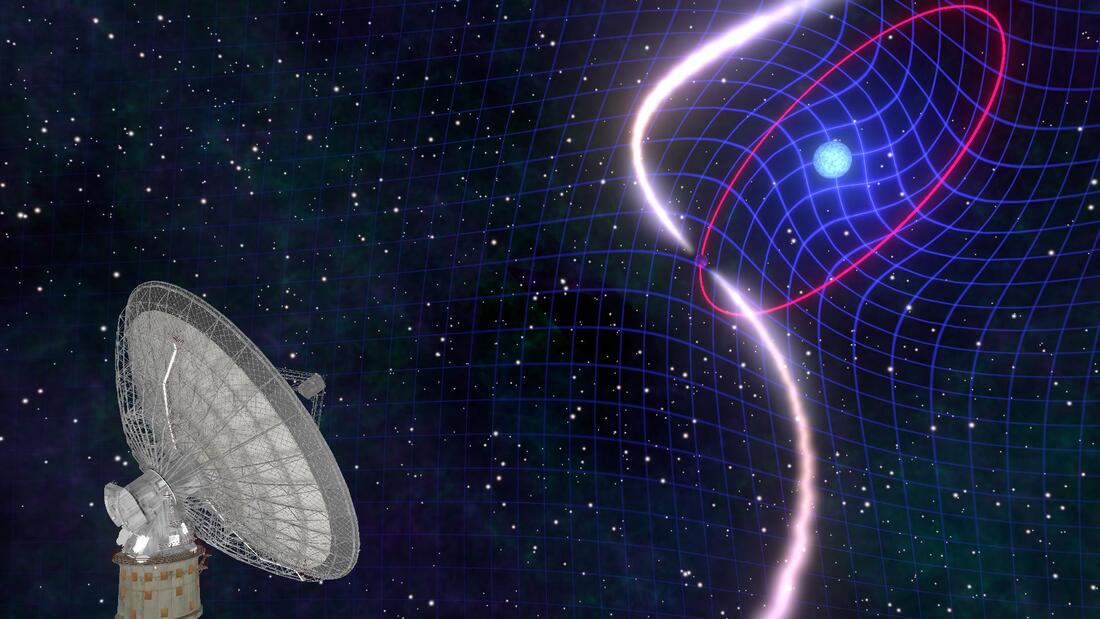Key Takeaways:
- Frame-Dragging Confirmed: Recent research provides concrete evidence of frame-dragging, confirming Einstein’s prediction that spinning celestial bodies influence the fabric of space-time.
- White Dwarf Dynamics: White dwarfs, remnants of massive stars, exhibit powerful frame-dragging effects, approximately 100 million times stronger than Earth’s.
- Unique Binary System: PSR J1141-6545, a binary system with a white dwarf and a pulsar, serves as a gravitational laboratory, allowing astronomers to observe Einsteinian gravitational effects.
- Precision Measurement: Meticulous measurements using the Parkes radio telescope reveal the system’s orbit evolution and offer detailed insights into the dynamics of PSR J1141-6545.
- Einstein’s Enduring Relevance: Despite being a 50-year-old instrument, radio telescopes like the one at Parkes continue to play a crucial role in exploring and confirming principles of general relativity, highlighting the enduring significance of patient astronomical research.
Einstein’s general theory of relativity, a cornerstone of modern gravitational theory, once again stands affirmed as recent research provides compelling evidence of a phenomenon known as “frame-dragging.”
This intriguing effect, predicted by Einstein, suggests that any spinning celestial body drags the fabric of space-time along with it. While frame-dragging is normally minuscule and imperceptible in everyday life, a team of astronomers has now detected it on a more noticeable scale, unveiling the cosmic ballet of a unique pair of stars.
In a study published in Science, researchers utilized a radio telescope to observe frame-dragging in action. The binary system under scrutiny, officially designated as PSR J1141-6545, comprises a white dwarf and a radio pulsar orbiting each other at astonishing speeds. This celestial dance provides a captivating glimpse into the warped space-time predicted by Einstein’s general theory of relativity.

The significance of white dwarfs in this cosmic narrative cannot be overstated. These remnants of once-massive stars, although similar in size to Earth, exhibit rapid rotations, with some spinning every minute or two. The frame-dragging caused by such celestial bodies is remarkably potent, approximately 100 million times more powerful than Earth’s.
Unfortunately, directly accessing white dwarfs for observation is impractical. Nature, however, offers a workaround through pulsars, dense neutron-packed stars emitting rhythmic radio waves. The binary system’s pulsar, spinning 150 times per minute, acts as a cosmic lighthouse, allowing astronomers to map its orbit around the white dwarf with remarkable precision.
The binary system’s official designation, PSR J1141-6545, has served as an invaluable gravitational laboratory since its discovery two decades ago. Researchers, relying on the Parkes radio telescope, have meticulously measured the system’s orbit evolution, revealing a myriad of Einsteinian gravitational effects. Despite the immense distance (several hundred quadrillion kilometers), the measurements offer a detailed understanding of the system’s dynamics.
The formation process of this celestial duo involves the demise of the more massive star, leaving behind a white dwarf. Material transfer from the surviving star initiates the white dwarf’s rapid rotation.
In rare instances, the second star undergoes a supernova explosion, resulting in the creation of a pulsar. The interplay of these cosmic elements gives rise to the observed frame-dragging effects, confirming Einstein’s predictions.
Einstein, who once believed many of his predictions would remain unobservable, has witnessed a transformative era in extreme astrophysics. Recent breakthroughs, including the detection of gravitational waves and the imaging of a black hole shadow, have showcased the remarkable capabilities of modern astronomy.

Notably, 50-year-old radio telescopes, like the one at Parkes, continue to play a crucial role in exploring and confirming the principles of general relativity, demonstrating the enduring significance of patient and dedicated astronomical endeavors.
The cosmic ballet, as observed in PSR J1141-6545, serves as a testament to the triumph of theoretical predictions meeting observational reality in the vast expanse of our universe.


